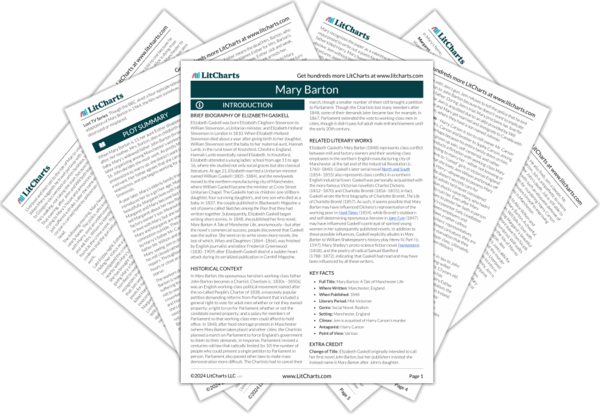The caricature, which represents the employers’ lack of empathy for the working classes, spurs John to demand revenge on the employers. John’s thirst for revenge—a fundamentally unchristian desire—shows how, in the novel’s view, the cruelty and callousness of the rich tends to damage the goodness, empathy, and religious faith of the suffering poor.
